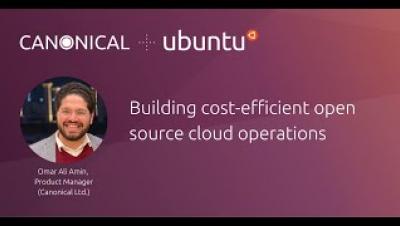Operations | Monitoring | ITSM | DevOps | Cloud
Linux
OpenStack challenges 2022
Happy New Year 2022! The fireworks are all fired, the champagne is over. It is time to get back to work. We are glad to see you here though. 2021 was a good year for OpenStack and its Ubuntu-based community. First, we all have seen Ubuntu becoming the number one operating system (OS) for OpenStack deployment. Then, the Open Infrastructure Foundation (OIF) reported explosive growth in the number of production OpenStack clouds. The community grew and settled on the most convenient platform.
Application composability and the shipping container
The previous blog post talked about the composability of applications. The key element for composing applications is defining the relations between application elements. And supporting relations is one of the advantages of the Charmed Operator Framework – including its runtime, the Charmed Operator Lifecycle Manager.
Deploy and maintain applications with Charmed Operators
Recently, I remembered a situation when I was in elementary school and visited a friend at his house. At some point, his mother wanted us to go to a neighbour and ask to borrow some eggs. We went a few houses down, opened the garden gate, entered through the door to the house, and arrived in the kitchen calling out for the person. But no one was at home, so we left and returned without eggs.
Kubernetes infographic: usage of cloud native technology in 2021
2021 has been an interesting year for the Kubernetes and cloud native ecosystem. Due to the pandemic, cloud adoption saw a big spike in adoption. As the year wraps up soon, we wanted to reflect on the top findings from the Kubernetes and cloud native operations report and we have a cool infographic for you. The new version of the report for 2022 is due some time in January so stay tuned!
How-To: Docker on Windows and Mac with Multipass
If you’re looking for an alternative to Docker Desktop or to integrate Docker into your Multipass workflow, this how-to is for you. Multipass can host a docker engine inside an Ubuntu VM in a manner similar to Docker Desktop. That Docker instance can be controlled either directly from the VM, or remotely from the host machine with no additional software required. This allows you to run Docker locally on your Windows or Mac machine directly from your host terminal.
Robotics and Ubuntu rewind 2021
A year packed with news and events. A year where great competitions came to an end. A year that made us dream with new robots. 2021 inspired us to reach new heights and pursue new breakthroughs. As we power millions of robotics developers with Ubuntu and our robotics open source tools, we present a recap of what marked this year. Discover the victories and defeats of 2021. Those product launches that made the front page. Our best tutorials and whitepapers.
Data centre networking: SmartNICs
This blog post is part of our data centre networking series: With the explosion of application traffic and the multiplication of data centre workloads during the last decade, east-west traffic greatly increased and ended up impacting the traditional north-south based architectures. This raised the need to review the entire data centre architecture while keeping the goal of meeting performance, security, and monitoring requirements.
Canonical Kubernetes 1.23 hits GA
The Kubernetes crew at Canonical is delighted to announce that Canonical Kubernetes 1.23 is now generally available. The team is committed to releasing in tandem with upstream so our users and customers can benefit from the latest features and improvements as soon as they become available. This blog is a quick introduction to Canonical Kubernetes and the top features available in release 1.23.
How we designed Ubuntu Pro for Confidential Computing on Azure
Not all data is destined to be public. Moving workloads that handle secret or private data from an on-premise setup to a public cloud introduces a new attack surface with different risks. As the public cloud environment shares its hardware infrastructure, a flaw in the clouds’ isolation mechanisms can be detrimental to the protection of sensitive data. The major public cloud environments tackle this by building their security following a defense-in-depth approach.









